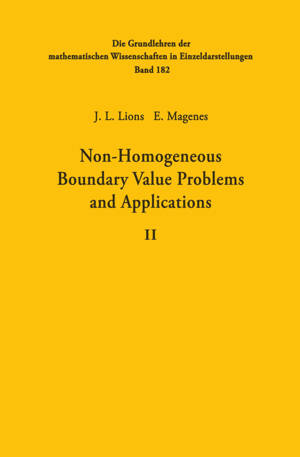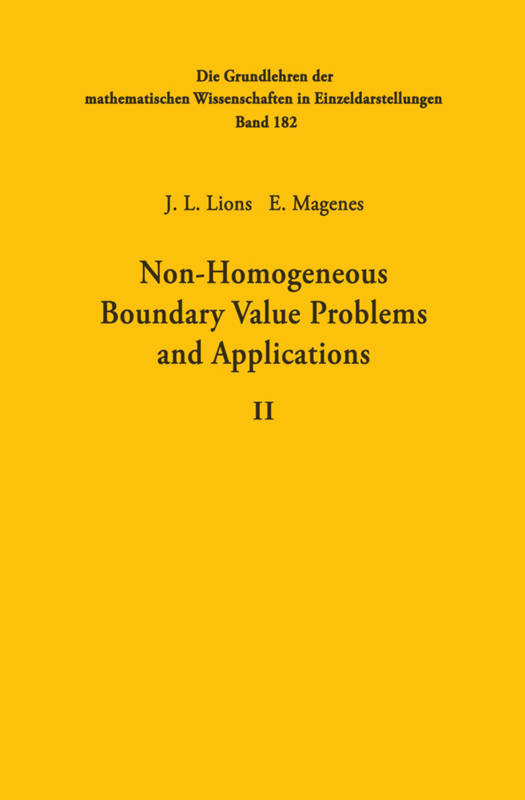
- Afhalen na 1 uur in een winkel met voorraad
- Gratis thuislevering in België vanaf € 30
- Ruim aanbod met 7 miljoen producten
- Afhalen na 1 uur in een winkel met voorraad
- Gratis thuislevering in België vanaf € 30
- Ruim aanbod met 7 miljoen producten
Zoeken
Non-Homogeneous Boundary Value Problems and Applications
Volume II
Jacques Louis Lions, Enrico Magenes
€ 198,45
+ 396 punten
Uitvoering
Omschrijving
I. In this second volume, we continue at first the study of non- homogeneous boundary value problems for particular classes of evolu- tion equations. 1 In Chapter 4, we study parabolic operators by the method of Agranovitch-Vishik [lJ; this is step (i) (Introduction to Volume I, Section 4), i.e. the study of regularity. The next steps: (ii) transposition, (iii) interpolation, are similar in principle to those of Chapter 2, but involve rather considerable additional technical difficulties. In Chapter 5, we study hyperbolic operators or operators well- defined in thesense of Petrowski or Schroedinger. Our regularity results (step (i)) seem to be new. Steps (ii) and (iii) are all3.logous to those of the parabolic case, except for certain technical differences. In Chapter 6, the results of Chapter'> 4 and 5 are applied to the study of optimal control problems for systems governed by evolution equations, when the control appears in the boundary conditions (so that non-homogeneous boundary value problems are the basic tool of this theory). Another type of application, to the characterization of "all" well-posed problems for the operators in question, is given in the Ap- pendix. Still other applications, for example to numerical analysis, will be given in Volume 3.
Specificaties
Betrokkenen
- Auteur(s):
- Vertaler(s):
- Uitgeverij:
Inhoud
- Aantal bladzijden:
- 244
- Taal:
- Engels
- Reeks:
- Reeksnummer:
- nr. 182
Eigenschappen
- Productcode (EAN):
- 9783642652196
- Verschijningsdatum:
- 12/11/2011
- Uitvoering:
- Paperback
- Formaat:
- Trade paperback (VS)
- Afmetingen:
- 156 mm x 234 mm
- Gewicht:
- 367 g

Alleen bij Standaard Boekhandel
+ 396 punten op je klantenkaart van Standaard Boekhandel
Beoordelingen
We publiceren alleen reviews die voldoen aan de voorwaarden voor reviews. Bekijk onze voorwaarden voor reviews.








